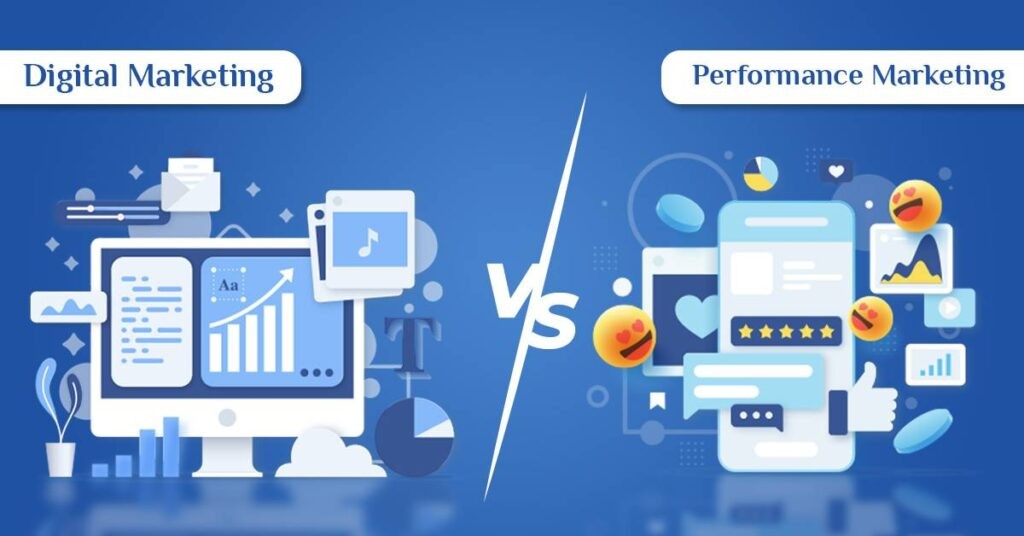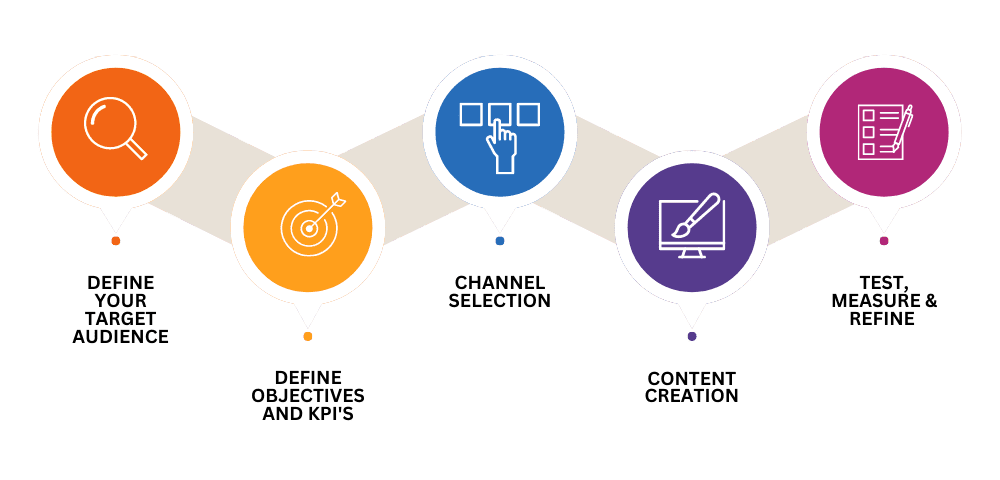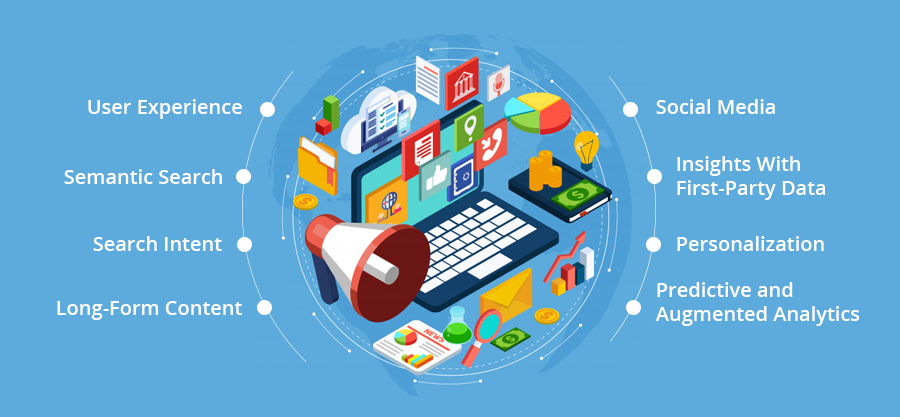- Have any questions?
- +91 96020 93137
- +91 93525 62080
- info@worldseoservices.com
What Is Performance Marketing? Definition and Beginner’s Guide

Navigating the Digital Landscape: Top 12 Digital Marketing Trends in 2023 You Should Know
January 24, 2024Performance marketing is a comprehensive term that refers to online marketing and advertising programs in which advertisers (brands or businesses) pay marketing companies or platforms when a specific action is completed, such as a sale, lead, click, or other predefined metric. Unlike traditional advertising where payments are made upfront for ad space, performance marketing is focused on measurable and trackable results.
Here is a beginner’s guide to performance marketing
- Measurable Objectives: Performance marketing campaigns are designed around clear and measurable objectives. These objectives could include generating sales, acquiring leads, driving website traffic, or increasing brand awareness.
- Payment by Performance: In performance marketing, advertisers only pay when a specific action is completed. For example, in a pay-per-click (PPC) campaign, the advertiser pays for each click on their ad. In an affiliate marketing program, payment is often based on sales or leads generated through affiliate links.
- Data-Driven Approach: Performance marketing heavily relies on data and analytics to assess the success of campaigns. Marketers use key performance indicators (KPIs) and analytics tools to track and measure the effectiveness of their efforts, allowing them to make data-driven decisions for optimization.
- Targeting and Personalization: Precision targeting is a key element in performance marketing. Advertisers use various targeting parameters, such as demographics, interests, and behaviors, to reach their specific audience. Personalization is often employed to create more relevant and engaging experiences for users.

Key Components of Performance Marketing
The key components of performance marketing encompass a variety of elements that collectively contribute to the success of a campaign. Here are some crucial components:
- Clear Objectives and KPIs: Establishing clear and measurable objectives is the foundation of performance marketing. Key Performance Indicators (KPIs) should align with business goals and provide a way to assess the success of a campaign.
- Target Audience and Segmentation: Identifying and understanding the target audience is crucial. Performance marketing relies on precise targeting to ensure that ads are reaching the right people. Audience segmentation allows marketers to tailor messages to specific groups.
- Data and Analytics: Robust data and analytics tools are essential for tracking and evaluating campaign performance. Marketers use data to gain insights into user behavior, measure key metrics, and make informed decisions for optimization.
- Attribution Models: Determining how credit for conversions is assigned across different touchpoints in the customer journey is essential. Attribution models help allocate value to various interactions and channels, guiding budget distribution and strategy refinement.
- Channel Selection: Choosing the right channels based on the target audience and campaign objectives is critical. Performance marketing channels include search engines, social media, affiliate networks, email, display advertising, and more.
- Ad Creatives and Messaging: Compelling ad creatives and messaging that resonate with the target audience can significantly impact performance. A/B testing different creatives allows marketers to identify the most effective elements.
- Landing Page Optimization: The user’s journey doesn’t end with the ad click. Optimizing landing pages for a seamless and relevant experience is crucial for maximizing conversions. Elements such as page load speed, design, and persuasive copy play a role in landing page optimization.
Getting Started with Performance Marketing
If you’re looking to get started with performance marketing, here’s a step-by-step guide to help you navigate through the initial stages:
- Define Your Objectives:
- Clearly outline your marketing objectives. Are you aiming to drive sales, generate leads, increase website traffic, or enhance brand awareness? Defining your goals will guide your entire performance marketing strategy.
- Understand Your Target Audience:
- Identify and understand your target audience. Who are your ideal customers? What are their demographics, interests, and online behavior? This information will help you tailor your campaigns for maximum effectiveness.
- Select Relevant Channels:
- Choose the most appropriate channels for your audience and goals. Common performance marketing channels include:
- Search Engine Marketing (Google Ads, Bing Ads)
- Social Media Advertising (Facebook Ads, Instagram Ads, Twitter Ads)
- Affiliate Marketing
- Email Marketing
- Display Advertising
- Choose the most appropriate channels for your audience and goals. Common performance marketing channels include:
- Create Compelling Ad Creatives:
- Develop attention-grabbing and persuasive ad creatives. Ensure your messaging is clear, concise, and aligned with your brand. Consider A/B testing different creatives to identify the most effective ones.
- Optimize Landing Pages:
- Design and optimize landing pages to provide a seamless and relevant experience for users. Landing pages should align with the ad content and encourage visitors to take the desired action (e.g., making a purchase or filling out a form).
- Implement Tracking and Analytics:
- Set up tracking tools such as Google Analytics and conversion tracking. This will allow you to monitor the performance of your campaigns, understand user behavior, and make data-driven decisions for optimization.
- Choose Attribution Models:
- Decide on an attribution model that best fits your business model. Common attribution models include first-click, last-click, and multi-touch. Understanding how different touchpoints contribute to conversions is essential for effective budget allocation.
- Set Budgets and Bidding Strategies:
- Determine your budget for each campaign and select an appropriate bidding strategy. Different platforms offer various bidding options, such as cost-per-click (CPC), cost-per-acquisition (CPA), or cost-per-thousand-impressions (CPM). Choose the strategy that aligns with your goals.
- Launch and Monitor Campaigns:
- Launch your campaigns and closely monitor their performance. Keep an eye on key metrics such as click-through rates (CTR), conversion rates, and return on ad spend (ROAS). Use this data to identify areas for improvement.
- Test and Optimize:
- Continuously test different elements of your campaigns, including ad copy, visuals, targeting parameters, and landing pages. Optimization is an ongoing process that helps you refine your strategy and maximize results.
- Ensure Compliance:
- Adhere to legal and ethical standards. Be aware of advertising regulations and ensure that your campaigns comply with them. This includes respecting user privacy and obtaining necessary permissions for data usage.
- Learn and Adapt:
- Stay informed about industry trends, algorithm updates, and new features on advertising platforms. Performance marketing is dynamic, and staying adaptable and informed will contribute to long-term success.


